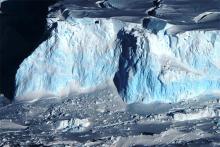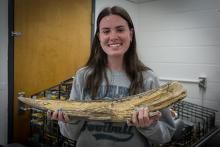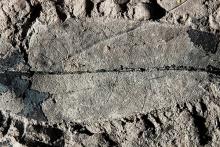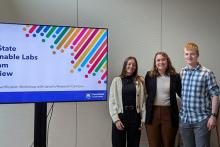A team led by researchers at Penn State developed a new method to evaluate cracks that destabilize ice shelves and accelerate loss of sea ice.
Eight Penn State graduate students, including two from EMS, received U.S. National Science Foundation (NSF) Graduate Research Fellowships for the 2025-26 academic year.
- Hometown:
- Hometown:
- Hometown:
- Hometown:
It took a series of events for things to fall into place. First, a mastodon had to live its life in the rolling terrain of Iowa, fossilize and be exposed by erosion in a nearby stream some 13,000 years later. Chris Widga, a vertebrate paleontologist at Penn State, had to find a home as director of the EMS Museum & Art Gallery. And Kaitlin Dasovich, a student in geosciences, had to develop a spark for undergraduate research.
For the first time, scientists have discovered fossil evidence of an endangered, living tropical tree species. The unprecedented find was made in Brunei, a country on the large island of Borneo, and reveals a critical piece of the ancient history of Asia’s rainforests, highlighting the urgent need for conservation in the region, according to researchers at Penn State who led the discovery.






